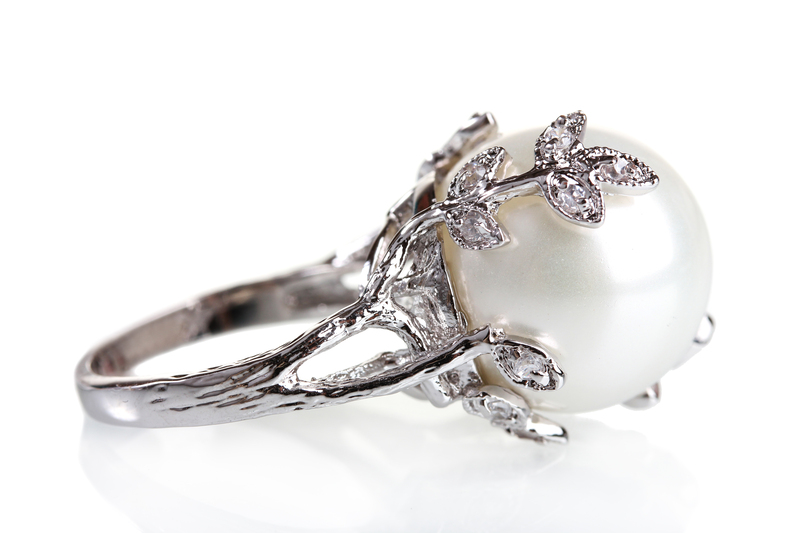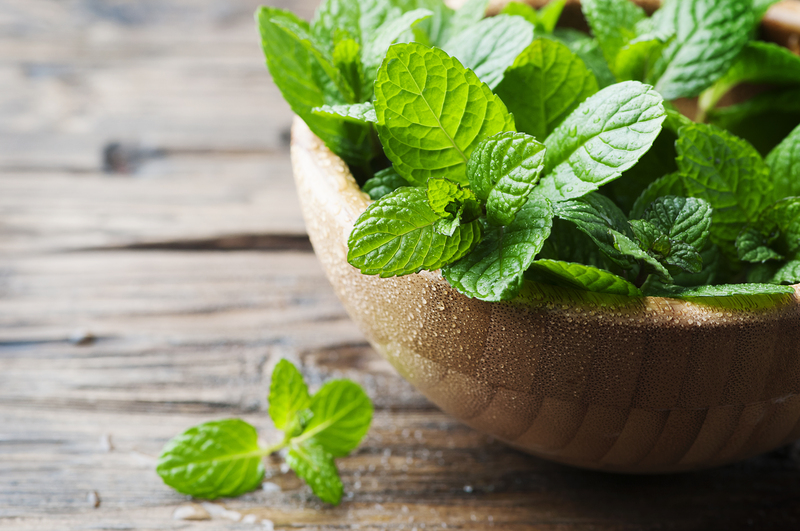The Ultimate Freshness: Keeping Enamel Oven Trays Grease-Free Simplified
Posted on 26/08/2025
The Ultimate Freshness: Keeping Enamel Oven Trays Grease-Free Simplified
Enamel oven trays are a prized kitchen asset due to their heat distribution, durability, and non-stick properties. However, their glossy finish can become dulled and compromised by stubborn grease and baked-on residue. Maintaining grease-free enamel oven trays is key to prolonging their lifespan, enhancing food flavors, and keeping your kitchen pristine.
This comprehensive guide unveils the ultimate freshness secret: effective, easy, and safe techniques for keeping enamel oven trays grease-free. Read on to discover expert tips, best practices, and proven cleaning solutions that simplify your kitchen routine!
Why Keeping Enamel Oven Trays Grease-Free Matters
Many home cooks underestimate the importance of regularly cleaning their oven trays. However, neglecting this simple task can lead to:
- Unpleasant Odors: Stale grease and food residue create lingering kitchen smells that affect the taste of your meals.
- Poor Food Quality: Burnt-on grease can smoke and transfer flavors, impacting your recipes.
- Reduced Tray Longevity: Built-up grease can degrade the enamel coating, leading to chipping and rust over time.
- Unhygienic Conditions: Oily residues serve as breeding grounds for bacteria and can even contribute to fires in extreme cases.
Consistently maintaining clean, grease-free enamel bakeware is the cornerstone of ultimate kitchen freshness.

Understanding Your Enamel Oven Trays
Enamel trays are steel sheets coated with a tough glass-like enamel layer. This gives them:
- Non-stick properties
- High heat resistance
- Resistance to warping
- A smooth, attractive finish
However, enamel-coated oven trays are still vulnerable to:
- Scratches from abrasive tools
- Dulling from harsh chemicals
- Grease stains from high-fat foods and infrequent cleaning
Proper care ensures that the freshness and performance of your oven trays is preserved for years to come.
How Grease Builds Up on Enamel Oven Trays
During roasting and baking, oils and fats naturally drip onto your trays. Over time, high oven temperatures cause these substances to harden and carbonize, sticking tenaciously to the enamel surface. Simply rinsing with water may not be enough - actually, improper cleaning can seal in residue, making the problem worse.
Common Culprits for Grease Buildup
- Roasting meats with generous fats or skins
- Baking casseroles and gratins that bubble over
- Cooking with oil-based marinades
- Oven-fried items like bacon, potato wedges, or breaded chicken
Attention to cleaning right after cooking is the first line of defense for a grease-free enamel tray.
Prevention: The First Step to Grease-Free Enamel Oven Trays
Prevention is simpler than restoration! Taking small steps before and during cooking can keep your enamel oven trays clean and fresh:
1. Use Baking Paper or Foil
- Line trays with parchment paper or aluminum foil to catch drips and splatters
- Dispose of liners after use - less mess, minimal cleanup
2. Apply a Light Oil Layer
- Before cooking, mist or wipe a small amount of oil on the tray
- This prevents food from sticking and makes wiping off residue much easier
3. Avoid Overfilling the Tray
- Overcrowding leads to excess grease spillage and uneven cooking
- Allow space for airflow and even roasting
4. Regular Maintenance Cleaning
- Wipe trays with paper towels or a damp cloth soon after use - don't let grease set
- Even a quick rinse can prevent stubborn buildup later
Fast & Effective Cleaning Methods for Grease-Free Enamel Trays
No matter how careful you are, some grease and residue are inevitable. But keeping your enamel oven trays grease-free is easy with these expert-approved routines:
1. The Gentle Hot Soak
- Place the tray in a sink or basin
- Add hot water (not boiling) with a squirt of mild dish soap
- Let soak for at least 30 minutes - longer for stubborn stains
- Use a soft sponge or dishcloth to remove loosened grease
- Rinse thoroughly and dry with a soft towel
2. The Baking Soda & Vinegar Solution
- Sprinkle baking soda generously over greasy areas
- Spray or pour white vinegar on top to produce fizzing action
- Let sit for 10-20 minutes - the chemical reaction helps lift grime
- Wipe clean with a sponge, then rinse well
3. The Steam Clean Trick
- Add about 1 cup of hot water to your enamel tray
- Place in a preheated oven at 120?C (248?F) for 20 minutes
- Carefully remove and pour away water - steam will have softened grease
- Wipe off residue with a soft cloth
4. Commercial Enamel Cleaner
- Choose a cleaner specifically formulated for enamel surfaces
- Apply as directed - usually, you spray on, let sit, then rinse and wipe clean
- Always avoid abrasive powders and steel wool as they can scratch the enamel
5. Enzyme-Based Cleaners
- These break down organic grease safely without harsh chemicals
- Follow manufacturer's instructions for best results
Quick Tips for Stubborn, Baked-On Grease
- If all else fails, repeat steps 2-3 or soak overnight with baking soda added to the water
- A soft nylon scraper can help dislodge hardened bits without harming enamel
- Never use wire brushes or scouring pads - they damage the enamel layer
How Often Should You Clean Enamel Oven Trays?
Consistency is crucial for maintaining grease-free and fresh oven trays:
- Wipe or rinse after every use, even for small spills - prevents hardening of residue
- Deep clean with baking soda or enzyme cleaner at least once a week or after cooking fatty foods
- Monitor trays for stains or odors; prompt action keeps them sparkling
Best Products for Cleaning Enamel Oven Trays
Choosing suitable products can make all the difference. Here are some of the best tools and cleaners for grease-free enamel tray maintenance:
- Mild dish detergents - Safe for everyday grease removal
- White vinegar and baking soda - Eco-friendly, effective, and inexpensive cleaning duo
- Enzyme-based sprays - Break down fat and protein without scrubbing
- Commercial non-abrasive enamel cleaners - Specifically formulated for glossy, delicate surfaces
- Soft sponges/microfiber cloths - Gentle but effective for wiping
- Silicone baking mats or parchment paper - Prevent mess before it starts
- Nylon scrapers - Safe for tackling stubborn bits without risk
What NOT To Use on Enamel Oven Trays
Protect your enamel finish by avoiding these common (but damaging) cleaning mistakes:
- Steel wool or metal scouring pads - They scratch and chip the enamel surface
- Highly abrasive cleaners - Powders and harsh chemicals degrade the glossy layer
- Baking at extremely high temperatures when empty - Can weaken the coating
- Leaving trays wet or soaking for days - Can cause rust on exposed metal edges
Simple Daily Habits for Ultimate Freshness
Incorporate these kitchen habits to keep your enamel oven trays clean and grease-free effortlessly:
- Before each use, inspect trays and line or oil as needed.
- After cooking, let trays cool, but don't allow stains to set for hours.
- Wipe away excess grease with kitchen paper while still warm (not hot).
- Soak briefly in soapy water if you don't have time for a full clean.
- Deep clean at least weekly, depending on cooking frequency.
- Store trays dry and avoid stacking heavy items on top, which can scratch enamel.

Frequently Asked Questions on Grease-Free Enamel Tray Care
Q: Can you put enamel oven trays in the dishwasher?
A: Check your manufacturer's advice! While some enamel trays are dishwasher-safe, repeated high-temp cycles and aggressive detergents may dull the finish over time. Hand washing is typically preferred for ultimate freshness and longevity.
Q: What if my enamel tray is already stained or dull?
A: Try a paste of baking soda and water. Spread it over the stains and allow it to sit for 30 minutes, then rinse and buff with a soft cloth. If stains persist, repeat or use a gentle enzyme-based cleaner.
Q: There's a chip on my enamel tray - can I still use it?
A: Small chips may still allow safe use if no metal is exposed and baking is at moderate temperatures. However, if you see rust or excessive wear, consider replacing the tray to avoid health risks and poor cooking results.
Q: Should I preheat an empty enamel tray?
A: Prolonged high-heat exposure with an empty tray can cause enamel to weaken or discolor. Always add food or a protective layer before heating your enamel tray.
Q: Why does my enamel tray lose its shine?
A: Dulling can be caused by abrasive cleaning, repeated oven cycles, or harsh dishwasher detergents. Restore some luster by polishing with a bit of mineral oil on a soft cloth.
Conclusion: Embrace the Ultimate Freshness for Your Enamel Oven Trays
Keeping your enamel oven trays grease-free doesn't have to be a chore. With the right habits, a touch of prevention, and a few effective cleaning methods, you'll enjoy trays that are spotless, odor-free, and ready for your next delicious meal.
Remember, the ultimate freshness in your kitchen starts with simple, consistent care for your tools. Treat your enamel oven trays well, and they'll reward you with years of flawless, tasty cooking - minus the sticky mess!
For more kitchen wisdom and cleaning secrets, bookmark this guide and keep your cooking life as fresh and effortless as possible!




